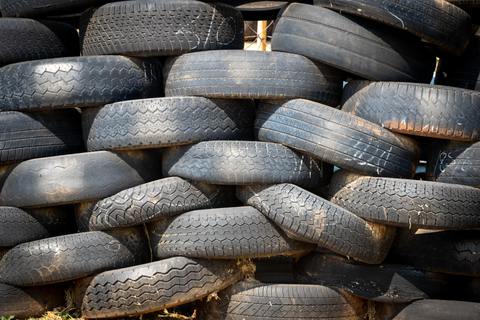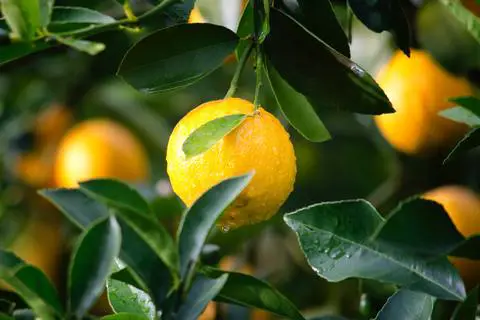This article is another in our series about “Coffee Notes” (despite these being less desirable notes!). Check out our other entries on Fruity Notes and Floral Notes!
Is your Coffee tasting particularly sour, or have the smell of paper, or even astringent like a chemical?
Maybe the SCAA Coffee Wheel can help you figure out where that flavor comes from. The SCAA Coffee Wheel is a classification of the different “notes” you may encounter in coffee. The video below gives a primer on what “notes” are:
The SCAA coffee wheel covers a broad range of flavors that you might encounter when drinking coffee- some much more desirable than others. In previous posts, we considered Floral Notes and Fruity Notes, both of which are usually considered a positive.

However, not all notes are “good” notes. While the wheel includes several flavors that would repulse most people, they’re primarily there to reference any possible flavors detectable in a cup of coffee. Specifically, we will consider the “other” and “fermented/sour” segments of the SCAA coffee wheel. Most of these notes are considered undesirable, but a few are, and a few may be desirable or undesirable depending on context. This guide will provide that context.
For your information, if you click on a product on Jayarrcoffee.com and decide to buy it, we may earn a small commission.
SCAA Coffee Wheel Segment: Other
Subcategory: Chemical
Note: Rubber
Description: Coffee with any rubbery notes will have a dark, heavy, sharp, and pungent aroma. Rubber is most often associated with tires or rubber bands- if you’ve ever walked into a tire store, you know the smell. While you’ll probably never see any coffee that is advertised with notes of rubber, there are three things that normally cause it: poor brewing water, a terribly dirty coffee grinder, and beans that have dried while still attached to the coffee plant.
Note: Skunky
Description: Have you ever been driving down the interstate in the summer, far away from civilization, and a raunchy pungent scent starts to penetrate your nostrils? Chances are, a skunk has sprayed in the area. The smell itself is similar to latex but with a much stronger intensity. Believe it or not, coffee with this aroma isn’t too hard to find- coffee that has been roasted extremely dark will often have a skunky or fishy aroma to it. However, if your light roasted coffee has this kind of profile, make certain you’re using good brewing water.

Note: Petroleum
Description: Describing the aroma of vehicle gasoline, motor oil, or petroleum jelly, this profile is fairly uncommon when it comes to coffee. However, it can be detected in green coffee beans left wet and beginning to ferment- particularly when such beans are very freshly roasted (less than 24 hours ago as the compounds are still breaking down inside the bean), and when the beans were roasted with a kerosene powered roaster.

Note: Medicinal
Description: While not as unpleasant as some of the others, this note still is not preferred. This note regards the smell of a hospital, isopropyl alcohol, band aids, or iodine and can be present if coffee beans were stored in a plastic bag for a long time, incorrect handling of the beans along the supply chain, or if industrial substances were stored in the direct vicinity of the beans.

Note: Bitter
Description: Caffeine is one of many compounds in coffee that generate bitterness- we wrote a bit more detail about bitterness in coffee in our Coffee Compounds post. While there are a lot of factors governing bitterness, a higher level of bitterness is common among robusta beans, which have more caffeine than arabica. Besides robusta beans, bitterness can also stem from an incorrect roasting process, over extraction of the coffee, or brewing with water far too hot.
Note: Salty
Description: This note describes a strong salty aroma and flavor. One thing that can result in salty tasting coffee is brewing in such a way that under extraction occurs; this is an example of when salty notes are undesirable. However, a common practice to reduce the bitterness, or extend the life of stale coffee, is to brew it with a pinch of salt in the grounds, or add it to the finished cup, resulting in salty flavor/aroma.

Subcategory: Paper/Musty
Note: Phenolic
Description: The Phenolic note is commonly described as a damp and musty scent, similar to animal hide. This note is very similar to coffee that has been fermented. However, there are specific ways such a note can be transmitted into coffee: through drought, excessive heat, or while the beans are growing.
Note: Meaty/Brothy
Description: This note refers to the meaty aroma of a steak, beef stew, boiled meat, and even beef stock. The term is also used to describe a cup of coffee with a heavy and thick mouthfeel. This is often considered somewhat of a strange note, primarily due to how difficult it is to trace. It can be the cause of fermentation or very dark roasted coffee. Unlike most of the others on this list, this note isn’t necessarily bad, but may require getting used to.
Note: Animalic
Description: While this note includes the smells of horse stables, it also could refer to a silo of grain, or almost anything you’d associate with a farm. Coffee that is naturally processed can have an animalic aroma. This is one of the more preferred notes on this list.

Note: Musty/Earthy
Description: This note is commonly associated with potting soil- the heavy, sweet aroma that is associated with a dark and damp forest. While quality processing and roasting can yield earthy and thick cups of coffee, the flip-side is that it also results from coffee that molded slightly before roasting. If the beans aren’t dried enough, fungi and mold can easily sprout inside yielding an musty/earthy aroma.
Note: Papery
Description: The papery note is most often associated with the use of fresh, white paper coffee filters. Such a note can be found in coffee that has been roasted by being baked in an oven- but is most often related to using bleached paper coffee filters without pre-rinsing them.
Note: Musty/Dusty
Description: While this is similar to musty/earthy, it is more often associated with papery notes: a basement, or other closed space with a musty, sharp, and green profile. An obvious cause of this note is the presence of dust in the brewer or grinder, but it can also be linked to stale coffee.
Note: Cardboard
Description: The cardboard note is similar to the papery note, but specifically covers the aroma of cardboard. Besides not rinsing a unbleached paper coffee filter, this note is found in coffee where green coffee beans sat for a long time before roasting.

Note: Woody
Description: This note corresponds to the slightly sweet but musty aroma that a tree’s bark commonly has. Some coffee might, naturally, have notes of woodiness (for example, some light roasts). However, the woody note is more often related an overly slow roasting process or stale coffee.
Note: Stale
Description: This note is similar to stale bread or cereal, and most often relates to stale coffee (duh!). While other notes can be detected if the coffee is stale, this specific note is a good indicator of freshness.
Category: Sour/Fermented
Subcategory: Sour
Note: Sour Aromatics
Description: This is the aroma/flavor profile associated with pure sourness. While similar to the puckering taste of sour candy, this note lacks all the sweetness that such candy comes loaded with. The most common cause of sour coffee is under extraction.

Grinding your beans finer can often remedy a sour taste.
Note: Butyric Acid
Description: This note has an aroma/flavor profile similar to that of aged cheeses like Parmesan. Similarly, old tools – such as screwdrivers – with a rubbery handle may have this smell when the rubber decays. While it can be hard to pinpoint what causes this note in coffee, minor traces of butyric acid can be present in lightly roasted coffee; these traces are normally destroyed when roasting the beans darker.
Note: Acetic Acid
Description: Quite undesirable, this note relates to the aroma/flavor of vinegar. Coffee beans can take on the acetic acid note if they have been fermented in an uncontrolled environment, or can be present after using vinegar to clean a coffee maker.
Note: Isovaleric Acid
Description: Isovaleric acid carries the distinct smell of perspiration-caused foot odor and is somewhat similar to Romano cheese. This is a strange and also uncommon note. Coffee that is roasted exceedingly dark can carry this note.
Note: Citric Acid
Description: This note, similar to the citrus fruit section of the coffee wheel, relates more to a negative quality of being too chemically citric. Citric acid is described as being more sour than citrusy and usually astringent. Arabica coffee that is grown at very, very high altitudes can carry an acidity that may be compared to citric acid, but this is the exception and not the rule.

Note: Malic Acid
Description: The malic acid note is similar to the citric acid note but a little more fruity. Malic acid naturally occurs in the coffee plant- depending on the roast and processing method it can find its way into the cup.
Subcategory: Alcohol/Fermented
Note: Winey
Description: While this covers a wide range of wine, Cabernet Sauvignon is the wine usually chosen to describe this note: sharp, slightly fruity, and boozy. Coffee with some element of controlled fermentation can carry these notes.

Note: Fermented
Description: This note relates to the aroma of baking bread with fresh yeast, fermenting sugar, or the smell of beer. Much like the whiskey note, notes of fermentation are sometimes found in cold brew. However, this note can also be found in coffee past its expiration date.
Note: Whiskey
Description: The whiskey most closely associated with this note is that produced from grain mash. Cold brew coffee can sometimes have notes of whiskey, and you can buy coffee stored in whiskey barrels that will additionally carry the taste/aroma of whiskey. Usually, this is considered a desirable coffee note.

Note: Overripe
Description: Have you ever smelled a banana hanging on for dear life? Yes? Then you’re familiar with this note. Coffee with this note will be slightly sour, musty, damp, and have a profile that lingers with fruit or vegetables past their prime. One thing that can lead to this flavor is if the coffee cherries were left on the bush too long. This is not considered a desirable note.
